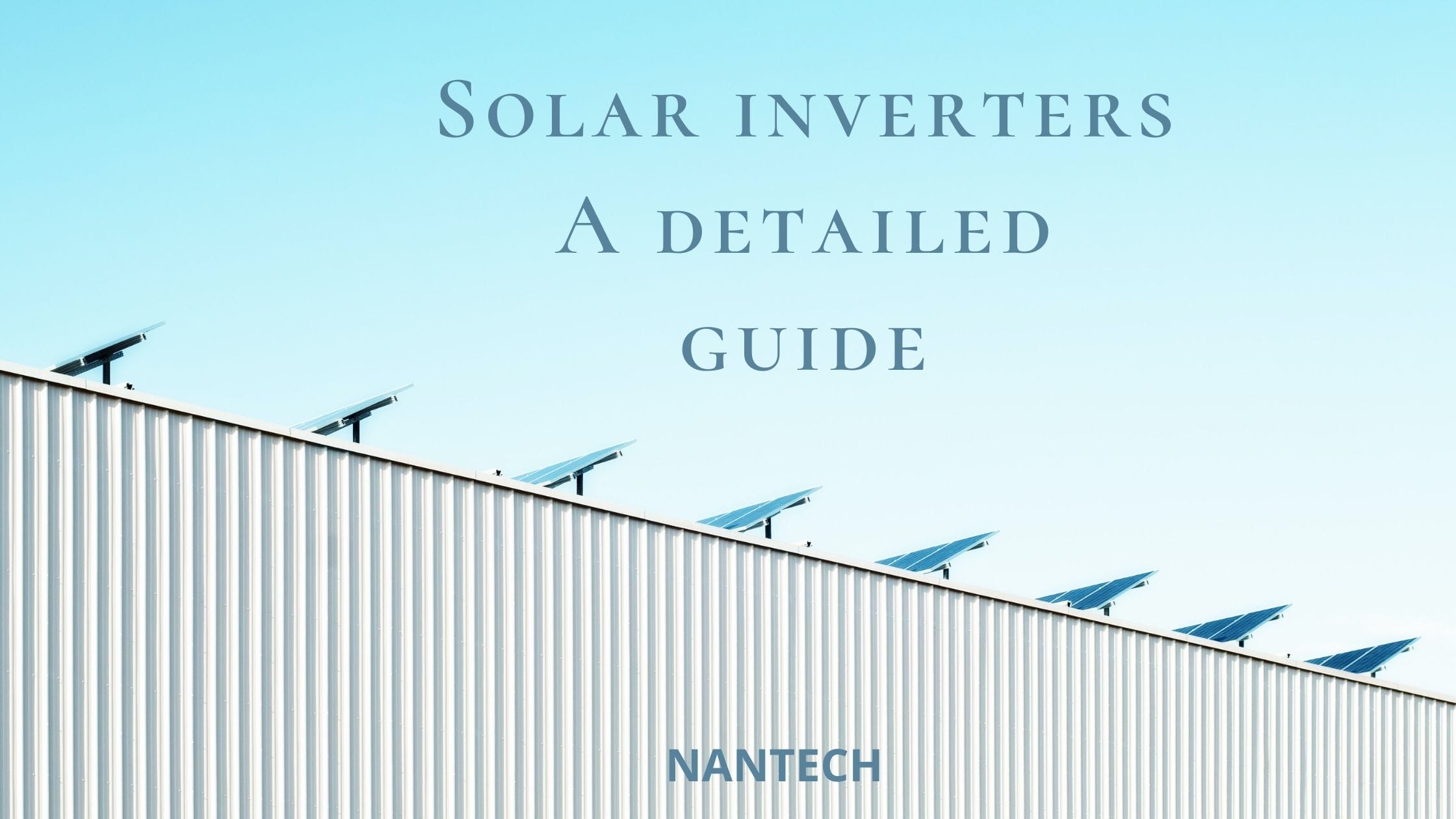- Home
- About us
- Products
- Dealer Enquiry
- Blog
- Contact Us
- Home
- About us
- Products
- Dealer Enquiry
- Contact Us
- 044 -2486 1994
- +91 99623 98222
- sales@nantech.in
- REQUEST A QUOTE

Solar Power is the conversion of energy from sunlight to electricity. It is one of the essential sources of renewable energy. It uses radiant light and heat from the sun that is harnessed using technology devices such as solar heating and cooling systems, solar thermal, photovoltaics, concentrating solar power, and converts it into electricity. Solar power is one of the cleanest and reliable forms of renewable energy. The devices used to collect the energy are explained in simple terms below.
This is a process of converting light into electricity using semiconductors that exhibit the photovoltaic effect. This effect is used commercially for electricity generation and as photosensors.
These generate power by using mirrors or lenses to gather the sun's energy onto a receiver and further drive them to traditional steam turbines or engines to create electricity.
Collect thermal energy from the sun to provide hot water, air conditioning, pool heating for resident or commercial usage.
Solar Inverters are a type of electrical converter which converts direct current (DC) output of a photovoltaic panel into a utility frequency alternating current (AC) that can be used for electrical grids, which can be used by local, private networks. Solar Inverters use MPPT (Maximum Power Point Tracking) to get to the maximum possible power from the photovoltaic array. The purpose of MPPT is to sample the cells' output and determine a resistance/load to obtain maximum capacity. Inverters are also referred to as the brains of the entire solar power system. One of the components includes the battery storage system. Stored batteries can be used in the times when the sun goes down during evening and night time.
Solar Inverters are divided into three different types.
Stay tuned till the end for some detailed guidance on solar inverters and their types on Nantech.
String Inverter
A string inverter is one of the popular devices used among households. It works well with All Home appliances. It converts Direct Current from solar panels to Alternating current electricity/power. Multiple strings are connected to produce electricity.
String Inverters are also known as Sine Wave Inverters. These can be paired with power optimizers.
Solar Micro Inverter
Solar Inverters used to operate with a single PhotoVoltaic model is known as Solar micro-inverters. These micro converters convert Direct Current(DC) output to alternating currents(AC). It is used for parallel connection of various units (multiple, Independent) because of its design. Micro Inverters are small in size and are plug-in and play a kind of device. These are connected in parallel to each other and then to grids while producing grid-matching Alternate Current(AC) directly at each solar panel bank.
Central Inverter
Just as the name suggests, Central Inverters are connected to form a standard combined inverter that converts the power to an Alternating current (AC). These are usually bigger and than String Converters. Thus, they are only suitable for covering large areas and not for primary household usage. Central Inverter can handle up to 500KW per enclosure.
Solar Inverter gives the benefit of using solar energy without hefty bills of electricity from our power supply. Solar Energy is the most acceptable renewable energy solution for this world full of electronic devices that needs to be charged before use. Thus, using electricity from solar panels and solar inverters might be the best renewable solution one can ever think of.
On-Grid Solar Panels – The Ultimate Guide
Off-grid Solar Plants – ON!
Solar Energy- A Natural & Unending Resource
Fun Facts About Solar Energy And Inverters
A Closer Look at Solar Inverter vs Normal Inverter
Modular UPS Versus Conventional UPS: Differences Decoded
Uncovering the Game-Changing Benefits of Modular UPS Systems
Maximising Inverter Battery Performance: Key Factors to Consider
Role of UPS Systems in Critical Industries